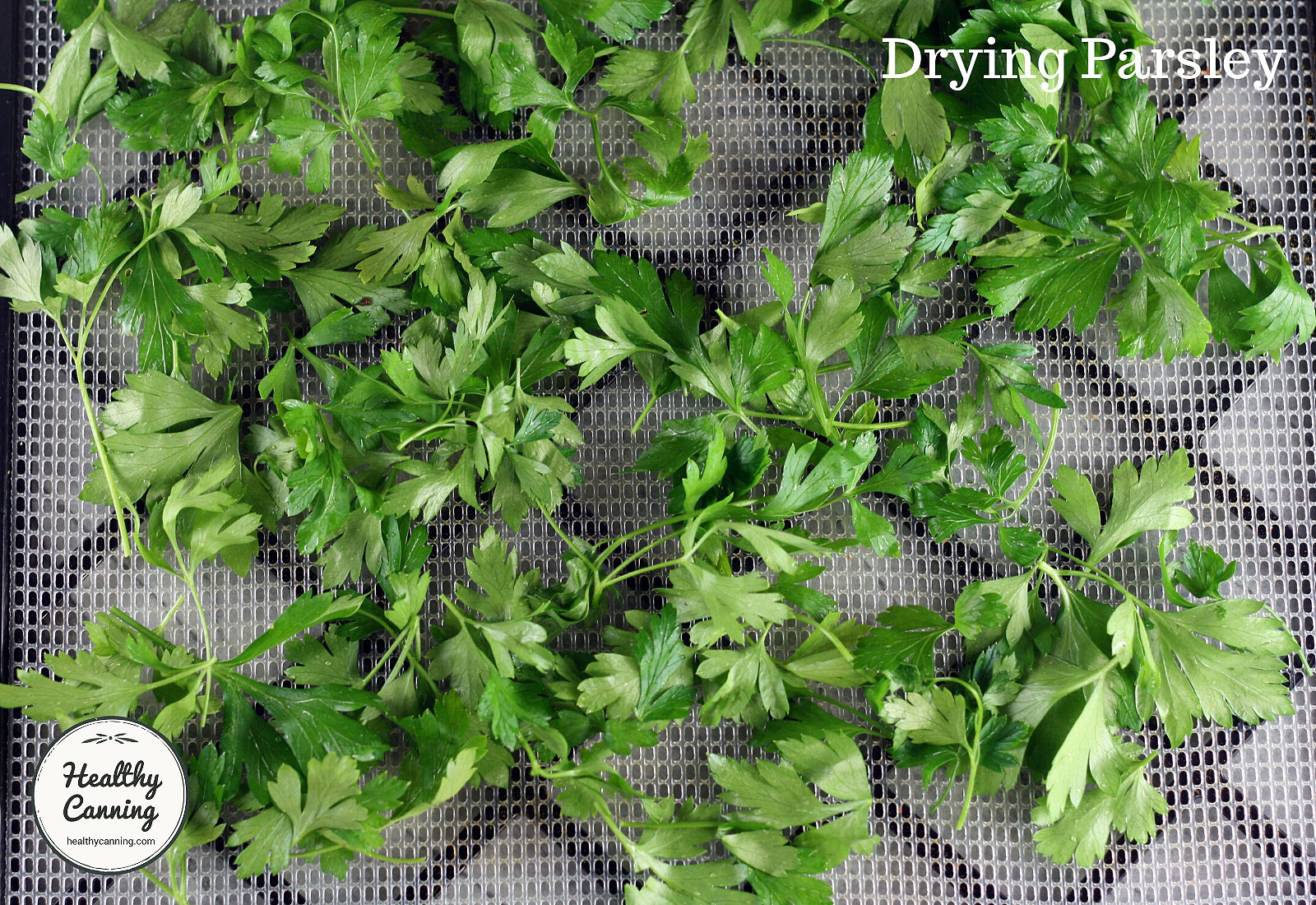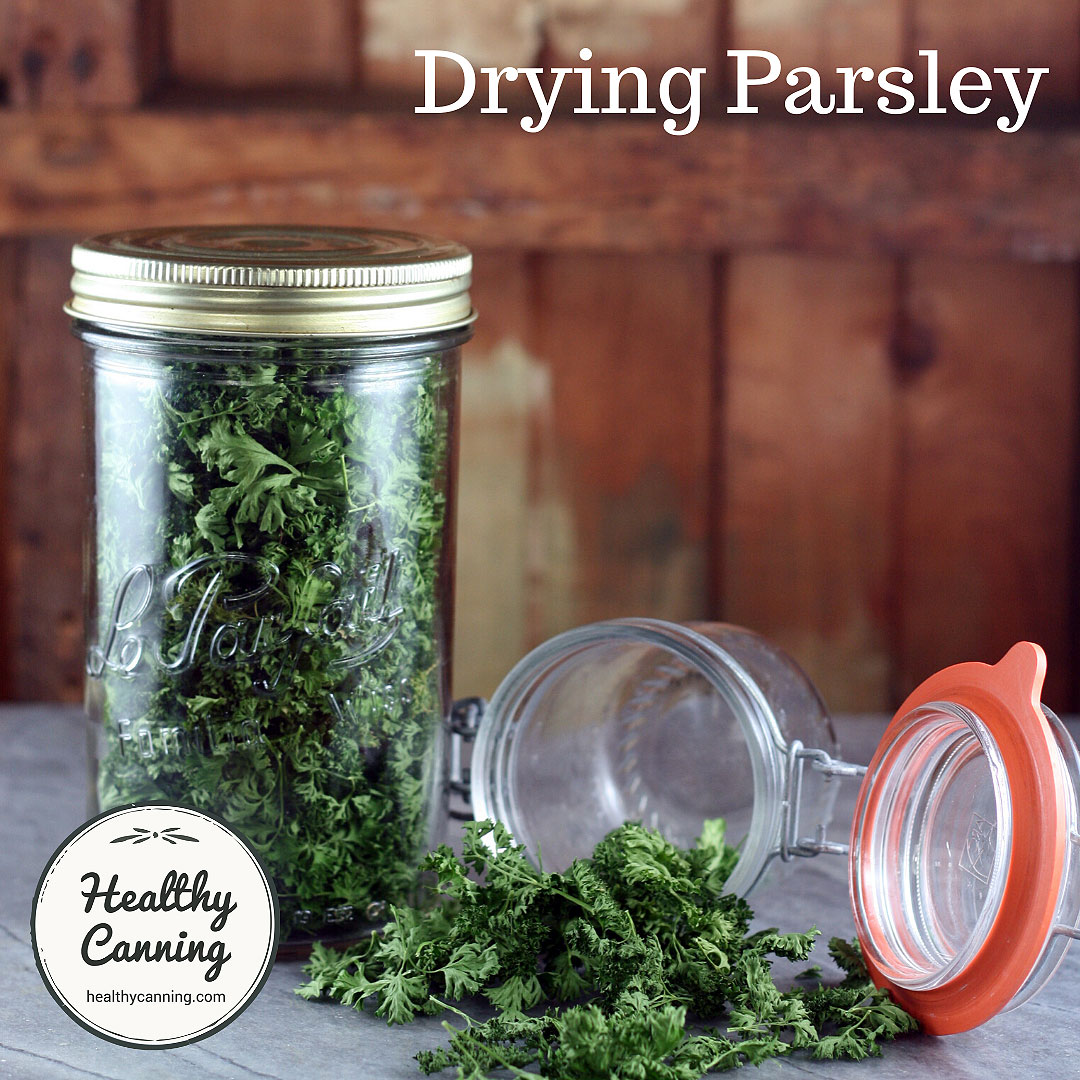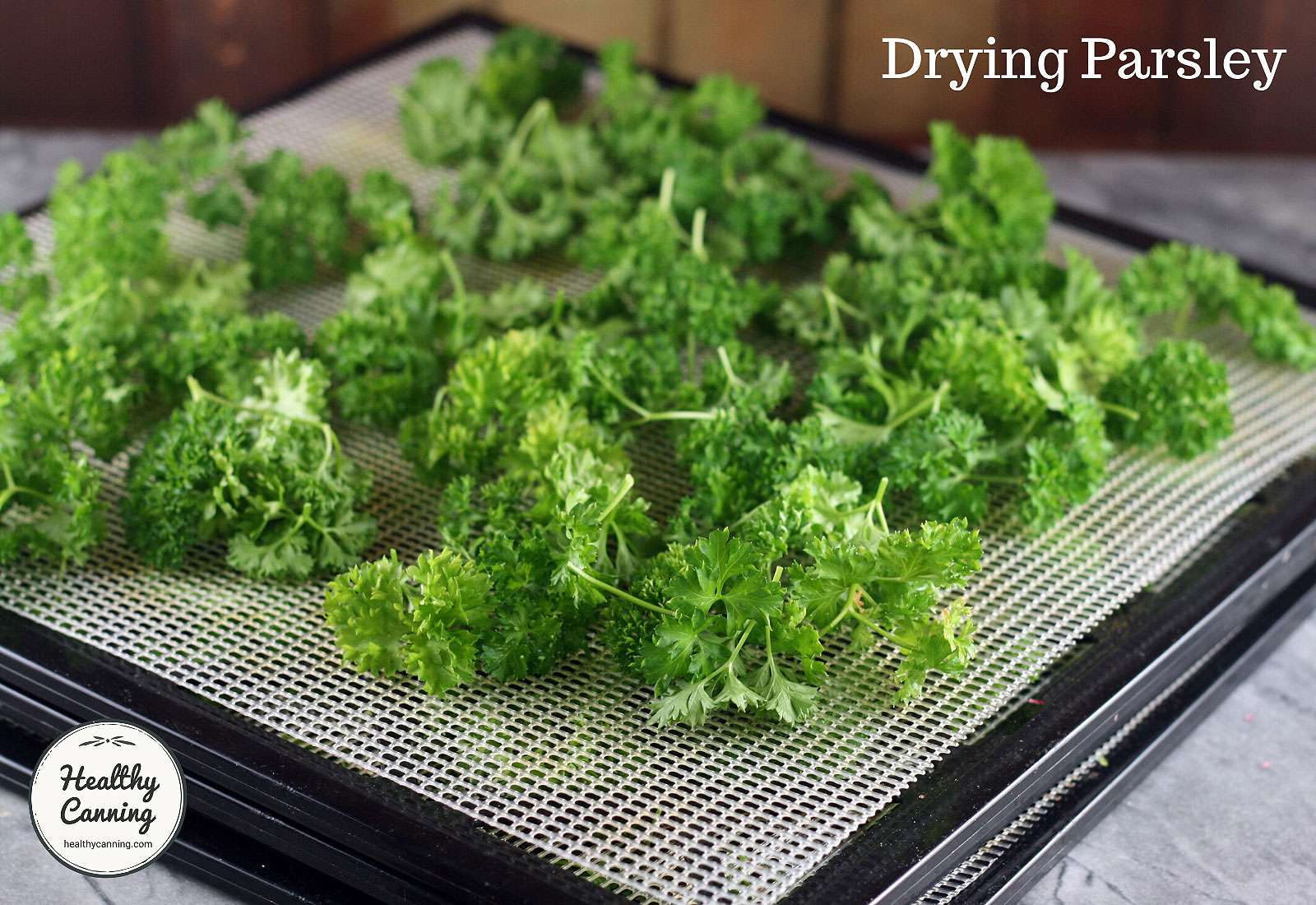Parsley is an easy herb to grow and dry. Drying it in a food dehydrator is superior to hanging it to dry, because the quicker drying helps to lock in its colour and flavour. The result is a very high quality product.
If you are growing your own parsley to dry, you’ll want to grow at least 3 or 4 bunches so that when you harvest it, you’ll have enough to fill up a few dehydrator trays and make it worthwhile firing up the dehydrator.
Harvest parsley before it starts to flower: the leaves will go bitter if you allow the plant to flower.
People living in temperate climates where plants die back during the winter should be able to do 3 or 4 harvests of parsley between the start of the growing season and the end before the end of the fall. At each harvest, leave some leaves on the plant so it has energy to keep on growing. You can be more ruthless in the final, autumn harvest at the end of the season.
The Excalibur dehydrator company recommends in its drying guidebook that Italian, Evergreen and Moss-Curled are varieties that retain their flavour well after drying. [1]Excalibur. Preserve it naturally. 4th edition, 2012. Page 82.
Yields and Equivalents
125 g (4 oz) sprigs of parsley, untrimmed = 8 cups loose packed, washed, spun dry, trimmed of thick stems = 4 Excalibur trays = 100 g (3 oz) dried
Directions
Here we compare directions from two different sources.
Ball All New
No advice.
Excalibur
Preparation: “Wash the parsley lightly under cold running water. Separate clusters and throw away the long or tough stems. Spread the sprigs or chopped leaves over the dehydrator trays.”
Blanching: None.
Temperature: 95 F / 35 C
Time: Approximately 1 hour, until papery and crisp.
Quality: Not stated
Reference: Excalibur. Preserve it naturally. 4th edition, 2012. Page 82.
So Easy To Preserve
Preparation: ‘Wash thoroughly. Separate clusters. Discard long or rough stems.”
Blanching: None
Temperature: Temp 95 – 115 F / 35 – 45 C.
Time: 1 – 2 hours
Quality: Good
Reference: So Easy To Preserve. 6th Edition. 2014. Page 350.

Drying flat leaf Italian parsley
Notes
Check frequently while drying; the drying times for parsley really are very short compared to many other things. You don’t want to dry it into sawdust. It is sufficiently dried when it is papery. It doesn’t necessarily need to crumble into dust when you touch it.
Storage
Let the dehydrated product cool completely to room temperature before packing it into storage containers.
Watch the sealed containers for the first few days for any sign of condensation. If condensation occurs, dehydrate a bit more.
Label jar with name of product and date. Store away from heat and direct light.
Be sure the storage container is sealed very tightly, as parsley particularly has an ability to take moisture back in from the air.
Usage notes
Most sources advise to store the dried pieces whole, and crumble / chop as needed. This is likely in order to maximize flavour retention. However, for more convenient measurements, you may still wish to whiz some down in a food pressure to smaller pieces for quick, easy measurement when in the flurry of putting a meal together.
There is no need to rehydrate dried parsley before use.
References



Leave a Reply